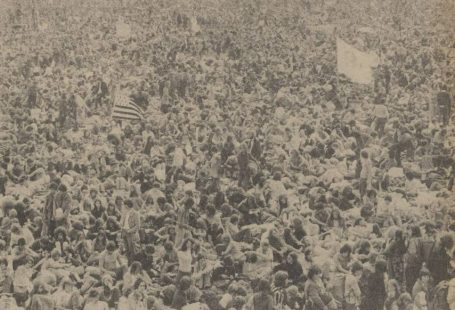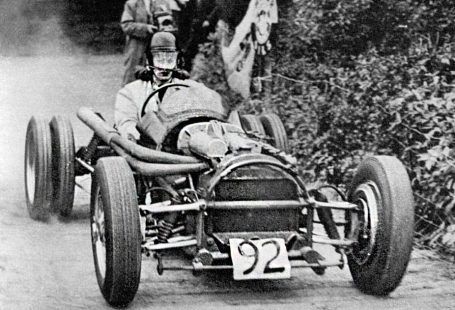In this special blog we use the remarkable photographs and illustrations contained in our Newspaper Archive to trace the tradition of the May Queen over one hundred and fifty years, as well as exploring the origins of this fascinating ritual.
We start out at Wymering, just outside of Portsmouth, in 1867. It was here, in the ‘latter part of the month of merrie May’, that a May Queen was crowned. The Illustrated Times tell us that the event is looked forward to ‘by hundreds with pleasurable anticipation,’ and that the proceedings involved a morning choral service at Wymering church, a procession, an enactment of a battle scene between Cavaliers and Roundheads, as well as the crowning of the May Queen, ‘chosen by the Vicar out of the first class in the national schools, with the vote of her own companions, for her good conduct.’
Illustrated Times | 9 June 1866
On first glance, this seems like the continuation of an ancient custom. Indeed, the crowning of the May Queen does have its origins in pagan lore. It is believed the Queen of the May awakens in the Springtime to fight off the Queen of the Winter. The May Queen herself is bedecked in white, to symbolise purity, and in flowers, to symbolise her connection with the organic energy of the earth.
However ancient the practice – perhaps stemming from traditions associated with Maia, Roman goddess of Springtime, and certainly echoing the Medieval tradition of Maid Marian – it saw a resurgence in the Victorian era. This is mainly due to the popular Tennyson poem The May Queen, which begins:
You must wake and call me early, call me early mother dear;
To-morrow’ll be the the happiest time of all the glad new-year,
Of all the glad new-year, mother, the maddest, merriest day;
For I’m to be Queen o’ the May, mother I’m to be Queen o’ the May.
Perhaps Tennyson’s poem went on to inspire another great mind of the Victorian era – John Ruskin. John Ruskin introduced the May Queen tradition to Whitelands Training College for Girls in Chelsea, a teacher training college. The Penny Illustrated Paper in 1890 relates how ‘Every year a Queen is chosen by her companions – chosen for her lovable disposition. Mr Ruskin sends a gold cross, as a present, to the May Queen, and a large parcel of his books, which she is permitted to distribute amongst her friends.’
The tradition of the May Queen outlasted the Victorian era, as seen in the below picture of the young May Queen in 1920s Stretford. The selection of the May Queen echoes Tudor and Stuart practices of selecting a Lord and Lady or King and Queen to preside over a festival, although the role of the Lord or King dropped out of vogue.
Even in war time May Queens were crowned, and perhaps most fittingly, due to the connotations of fertility and abundance, the Women’s Land Army had their own May Queen during the Second World War. The Bedfordshire Times & Independent tells how ‘hundreds of people watched the crowning of the Women’s Land Army May Queen (Miss Myra Griffiths). The event was held at Hulcote Moors WLA Hostel, and was recorded by the BBC: ‘it has been broadcast several times, and the Queen, Miss Myra Griffiths, gave special messages to the people of Persia and India.’
Bedfordshire Times & Independent | 1 June 1945
In 1952, a year before the coronation of another Queen, Elizabeth II, the people of the ‘centuries-old Parish of Pagham’ in West Sussex held their May festival, and crowned their own Queen. A day dedicated to children, according to the Bognor Regis Observer, the day featured a procession, a crowning ceremony, maypole dancing, and a gala fete.
The parallels between the two coronations were not lost on the people of Pagham, with their Town Crier reading the following message, which was telegrammed to Queen Elizabeth II herself:
We your Majesty’s loyal subjects of the historic village of Pagham being met together for the ancient ceremony of crowning our May Queen do send out Majesty homage. We wish our Majesty long life and happiness in this first year of her reign.
Bognor Regis Obeserver | 7 June 1952
This cult of the queen – the queen of the May – reflects another influence that perpetuates this custom, that of the Virgin Mary. In the Roman Catholic tradition the Virgin Mary is known as the Queen of the May, and the month of May is given over to her veneration. Thus, for many Roman Catholics, the crowning of the May Queen is as much to do with the worship of Christ’s mother as it is about the welcoming of spring.
Still this tradition endures, long into the twentieth-first century. The crowning of the May Queen represents a promise of youth, of growth, of the warmth of the coming summer season. However, there is something bittersweet about the festival, it being a celebration of life necessarily following the barren and deathly winter. This is perhaps best summed up in a verse from The Sketch, 2 May 1900:
Kindly Queen of the May
Spare me more than a day
Smile and sigh with me
Live and die with me
Don’t fly away, Queen of the May.













